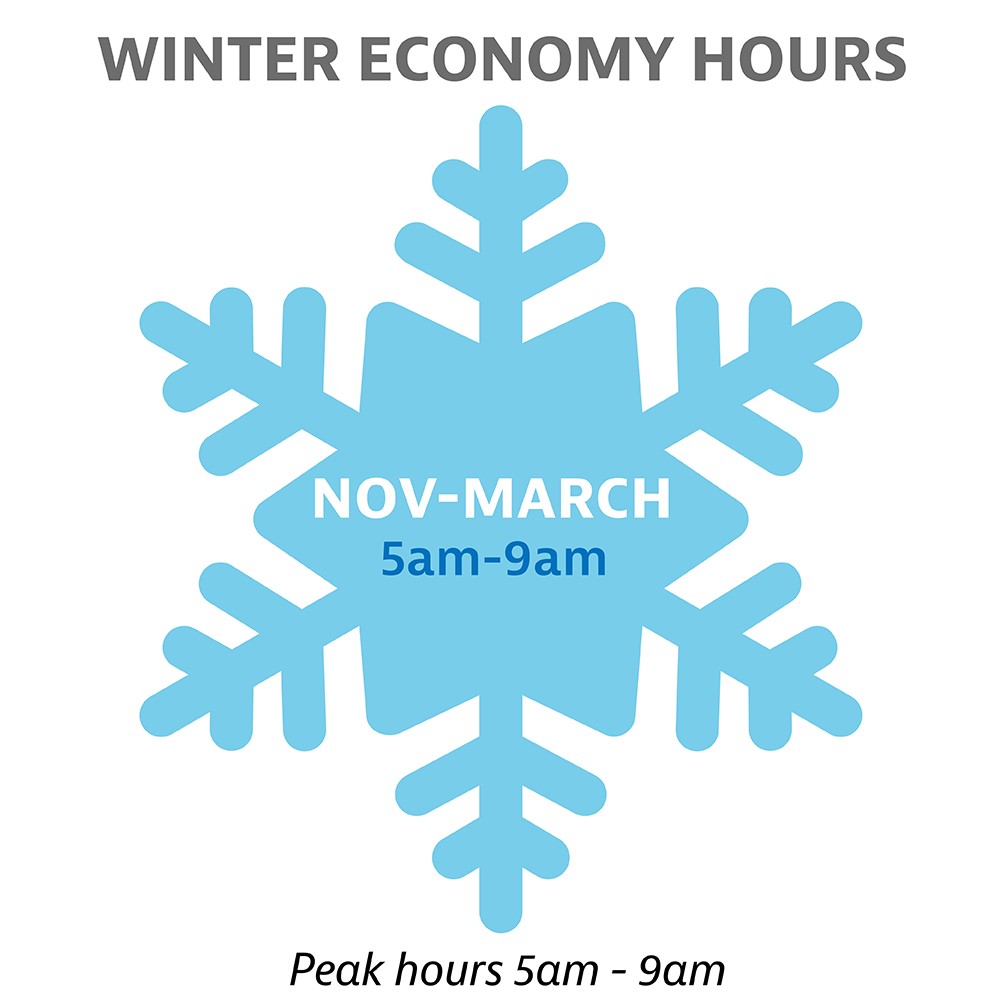Time Advantage - Demand Plan
What is demand?
- Demand is the amount of power needed to supply every electrical device running in your home at a specific point in time.
- Demand is the rate of using electricity.
- Demand is largely measured by the total number of electrical appliances operating in your home at any one time.
- To keep your electric bill down, limit the number of appliances you use at any one time.
How does the Time Advantage – Demand Rate Plan work?
With the Time Advantage – Demand Rate Plan, you save money based on the time of day that you use electricity and by avoiding the use of any major appliances at the same time. The more major appliances you can avoid using at the same time, the more money you save.
The Time Advantage – Demand Rate Plan is similar to the Time Advantage – Energy Plan but with three differences:
- The energy price during peak hours is 25.6092 cents/kwh with Time Advantage – Demand and 30.2554 cents/kwh with Time Advantage – Energy.
- The base charge is $14.50/per month with Time Advantage – Demand and $25/per month with Time Advantage – Energy.
- There’s an additional $1.50/kW charge for demand on the Time Advantage – Demand Rate Plan.
How to Save Money Using Time Advantage
Even if you are home using your electricity during the peak periods, you can still save on your bill over the course of an entire year when you take in consideration the year-round savings. 90% of the hours in a year fall under economy pricing.
With Time Advantage – Demand, you have an additional way to save money by avoiding the simultaneous use of major appliances during peak periods. If you are running your air conditioner (4 kW), dryer (5 kW) and pool pump (1 kW) at one time, then your demand would be the sum of these demands (or 10 kW). For example, if you dry your clothes when the pool pump isn’t running, then each month the demand is reset after your meter is read.
Weekend hours during all months are priced at the economy rate of 10.6092 cents/kwh. In April, May and October, you will receive all your electricity (kwh) at 10.6092 cents/kwh.
Economy Pricing Hours – 10.6092 cents, Winter Peak Hours – 12.6092 cents, Summer Peak Hours – 25.6092 cents.
All weekend hours are economy pricing all year long!

How to Save Money Using Time Advantage – Demand in Summer Months
For the summer months of June, July, August, September:
In the summer, during the week, there is a peak period between 1 p.m. and 7 p.m. The price during these hours is 25.6092 cents/kwh. Minimize your electricity use during this time by taking advantage of the economy pricing periods as much as possible.
Use the six tips below to shift energy usage during the summer months.
Set your programmable thermostat to 78-80 degrees on your central air conditioning unit during peak times.
Use fans or ceiling fans to cool your home to cut down on your use of the air conditioner when you are home.
Use a timer on your water heater.
Avoid using major appliances like the washing machine, dryer, pool pump and dishwasher at the same time.
Use a timer on your pool pump to turn it off.
Pre-cool your home in the morning before 1pm and use fans during the peak hours.

How to Save Money Using Time Advantage – Demand in Winter Months
For the winter months of January, February, March, November, December:
1. If you would like to save money, you can shift your electricity use to before 5 a.m. or after 9 a.m. to receive the 10.6092 cents/kwh price.
2. In the winter, during the week, there is a peak period between 5 a.m. and 9 a.m.

How to Save Money Using Time Advantage – Demand During Transition Months
Weekend hours during all months are priced at the economy rate of 10.6092 cents/kwh.
In April, May and October, you will receive all your electricity (kwh) at 10.6092 cents/kwh.
| Appliance Demands | |
|---|---|
| Appliance | Demand (kW) |
| Auxiliary Electric Heat for Heat Pump | 10 |
| Dryer | 5.4 |
| Oven | 1.2 - 4.4 |
| Water Heater | 3.0‐5.5 |
| 12 SEER Heat Pump (less efficient) | 3.0 |
| 15 SEER Heat Pump (efficient) | 2.4 |
| 20 SEER Heat Pump (more efficient) | 1.8 |
| Range (small-surface unit) | 1.3 |
| Range (large-surface unit) | 2.2 - 2.5 |
| Microwave Oven | 0.8 - 1.5 |
| Dishwasher | 1.2 - 2.4 |
| Electric Vehicle Charger – Level 1 | 1.4 |
| Electric Vehicle Charger – Level 2 | 3.3 |
| Toaster | 1.2 |
| Hand Iron | 1.0 |
| Coffee Maker | 1.0 |
| Vacuum Cleaner | 0.54 |
| Refrigerator - Freezer | 0.24 - 0.75 |
| Hair Dryer | 0.71 |
| Clothes Washer | 0.35–0.5 |
| Pool Pump | 1 |
